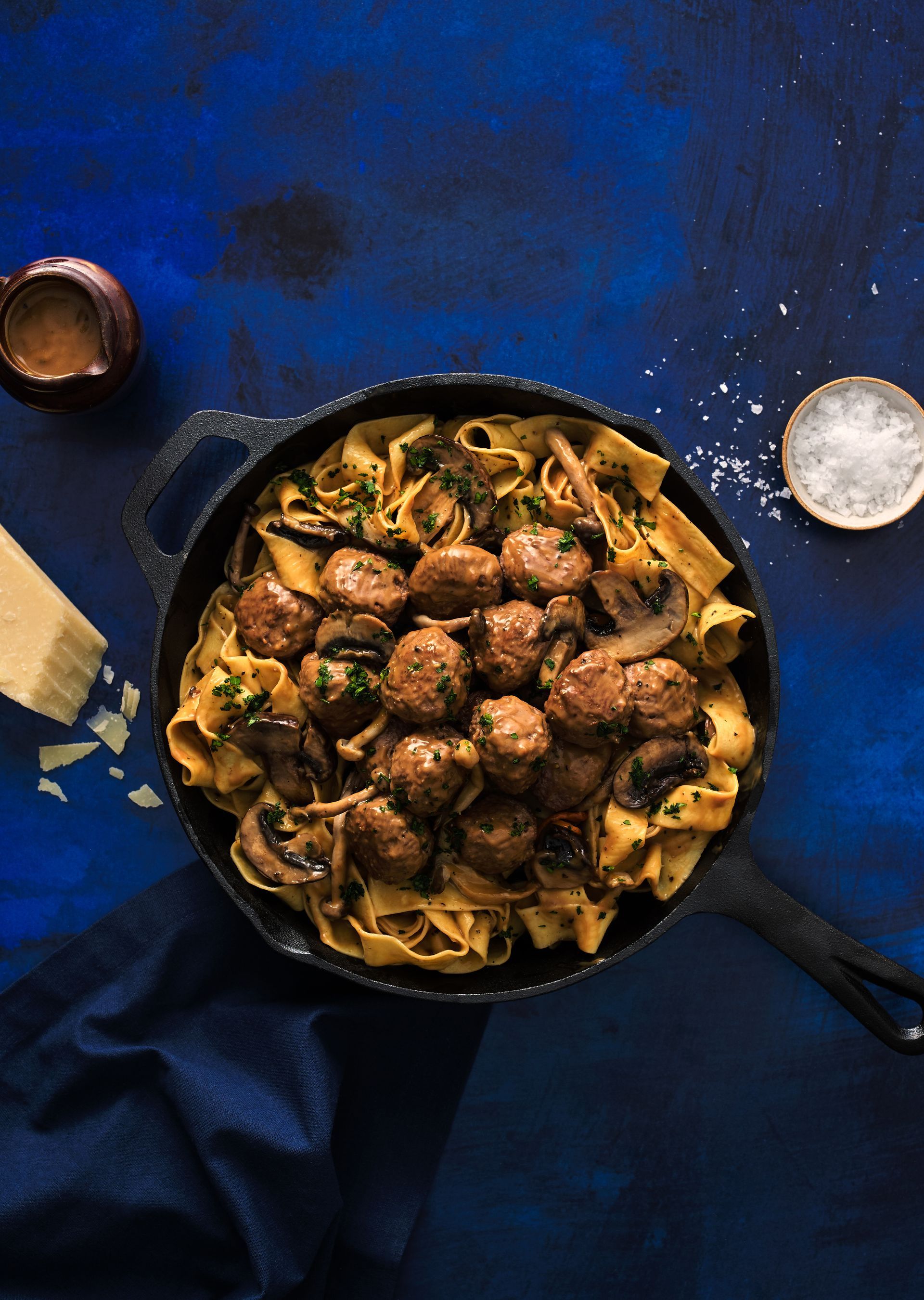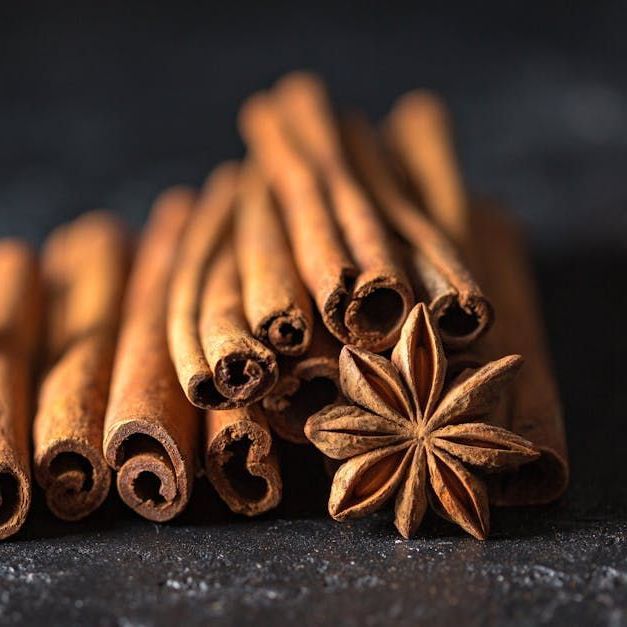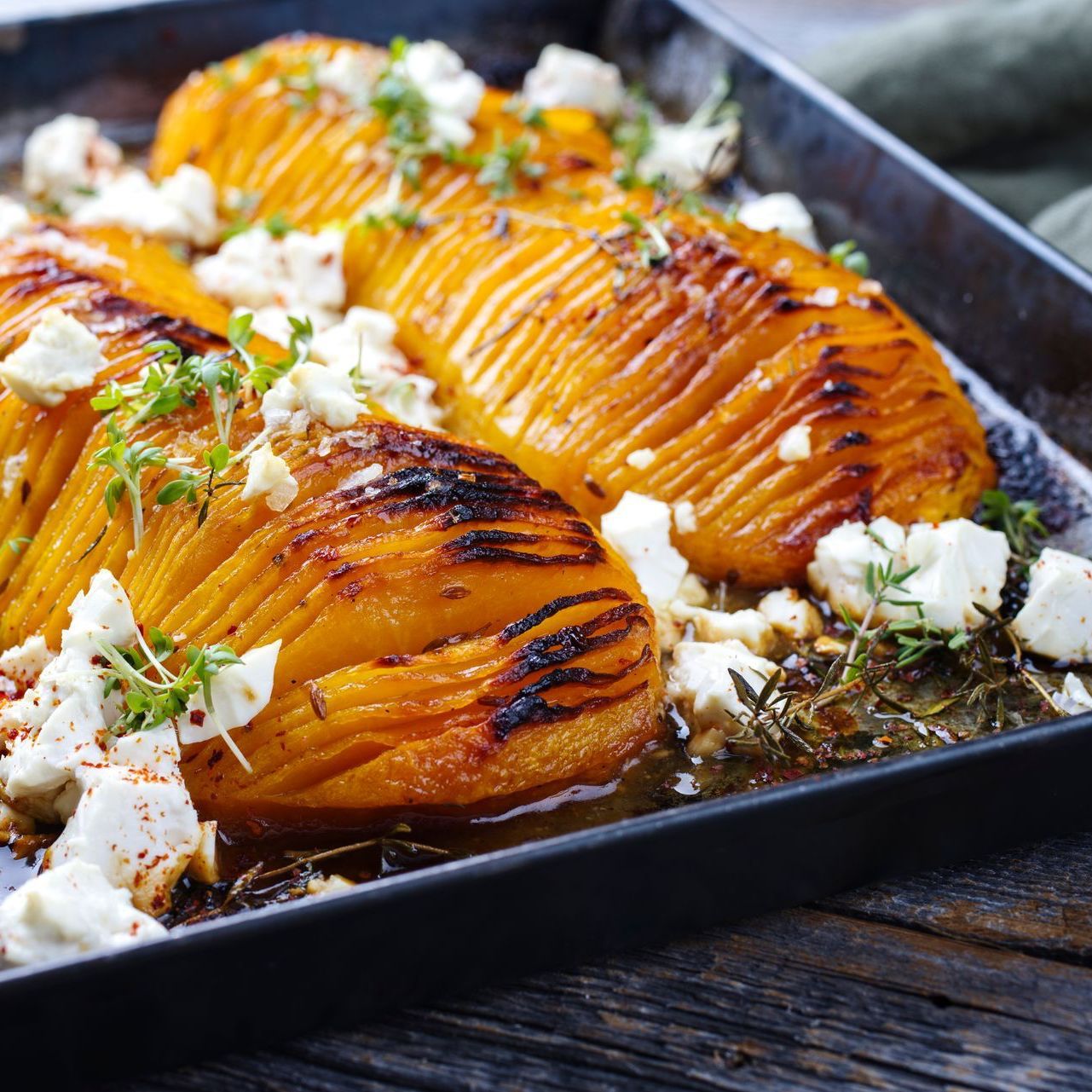AUTUMN ALLURE
Our pick of five standout ingredients of the season.
Get ready to elevate your autumn menus to new heights
Commence with the Cosy Season
There’s something about the latter months of the year that calls for comfort and indulgence, especially when it comes to food. Light, zingy salads and summer berries are banished in favour of rich, sumptuous dishes with deep flavours, hearty textures and imaginative takes on nourishing seasonal produce.
For catering professionals, the arrival of autumn presents a golden opportunity to captivate customers with a dose of cosiness in menus. And, with a rapidly approaching festive season on the horizon, it’s yet more opportunity to delight guests with soul-feeding dishes and the best ingredients of the season.
But how can you craft a menu that appeals to those seeking warmth and comfort without relying on ‘pumpkin spice’ everything? Here, we explore five ultimate autumn ingredients that will infuse your menu with indulgence and seasonal charm right through to Christmas, tempting customers out of the cold and through your doors.

GAME
Wild game is growing in popularity as an alternative to chicken, pork and beef, taking up more space on menus due to its sustainability and health benefits. In fact, sales of game went up 15.2% in the UK between April 2023 and 2024 (Kantar).
What is Game?
Any animal or bird that has been caught in the wild, from the large – such as venison and wild boar – to the small – pheasant, partridge wood pigeon, rabbit, hare, grouse or duck.
Doe, a Deer
Some UK game, such as grouse, pheasant and partridge, are generally in season in autumn and winter. However, with two breeding seasons a year, venison is available all year round. Rabbit and pigeon are also consistently available.
Into the Wild
Habitat management and conservation are carried out on 7.6 million hectares of land across the UK’s 24.5 million hectares as a result of shooting. This includes controlling pests and predators to protect wildlife, monitoring and reporting on birds and other wildlife, and feeding songbirds over the winter month.
Know your Meats
Younger game tends to be sweeter, and brining game birds before cooking can give the meat a succulence that more fatty meats naturally have. Venison, grouse and wildfowl should be cooked medium rare, like beef, and their rich flavours pair well with hedgerow fruits, autumn root vegetables and earthy mushrooms.
MENU INSPIRATION
Roast with the Most
Christmas dinners are elevated endlessly with a simple switch to wild game. For a special festive treat, serve up a whole pheasant roast, with one pheasant serving two. Pair with a tart pomegranate sauce or roasted grape jelly.
Italian Makeover
Many authentic Italian ‘peasant’ dishes are built around wild game. Try creamy potato gnocchi with rabbit and tarragon, a rich rabbit ragu lasagne or even a golden saffron risotto with perfectly cooked pigeon breast and fresh herbs.
Insider Idea
A favourite game recipe is ‘Keeper’s Pie’. It uses a mixture of pheasant and venison with a cheesy mashed potato topping and it is such a crowd pleaser.
Leon Challis-Davies
Culinary Director at Eat Wild, explains why he’s passionate about cooking with game.
Wildly Nutritious
“ I find game just as versatile as pork chicken and beef, but unquestionably more nutritious. It’s higher in protein and full of vitamins and minerals, and it’s lower in calories and saturated fat than farm-reared meats – plus, it’s additive and hormone-free.
Eco Credentials
When you use wild meat, you are giving back to the UK countryside tenfold compared with intensively farmed meats. Due to its locality in the UK and natural ‘free range’ credentials, it also has a lower carbon footprint than factory farmed meats.
Menu Game Plan
To incorporate game into your menu, exchange beef for venison and partridge for chicken. To experiment more, try grouse or pigeon – stronger in flavour, but equally as delicious"


Venison Meatballs and Wild Mushroom Ragout
Serves 4 Prep time: 25 mins
Cook time: 45 mins
- For the Meatballs
- 2 tbsp rapeseed oil
- 1 finely chopped onion
- 2 crushed garlic cloves
- 10g finely chopped thyme
- 500g venison or beef mince
- 80g fresh white breadcrumbs
- 1 egg, lightly beaten
- 70g Dijon mustard
- For the sauce
- 60g unsalted butter
- 400g New Forest mixed wild mushrooms
- 1/2 tbsp sweet smoked paprika
- 1 tbsp Caterfood Collection tomato paste
- 400ml beef stock
- 80ml brandy
- 150g sour cream
- 400g rustic egg tagliatelle
- 2 tbsp chopped flat-leaf parsley
1. Heat 1 tbsp of oil in a frying pan over a medium heat. Cook the onion for 3-4 mins until soft. Add the garlic and cook for 1 min. Transfer mixture to a bowl and stir through thyme, mince, breadcrumbs, egg and 2 tbsp mustard. Season, then form into 30 small meatballs. Chill for 30 mins to firm up.
2. Heat remaining oil in a large frying pan over medium heat. Cook meatballs for 6-7 mins in batches until golden and cooked through. Transfer to a bowl.
3. Return pan to high heat with 30g butter. Cook mushrooms, stirring for 4-5 mins until golden. Add paprika and tomato paste and cook for 1 min, then add the brandy, reduce by half, then add the beef stock and reduce by half.
4. Return the meatballs to the pan. Stir in sour cream and the remaining 1 tbsp mustard. Cook until warmed through (around 5 mins).
5. Meanwhile, cook the pasta according to the packet instructions. Drain, then toss with half of the parsley and the remaining butter. Season.
6. Add pasta and meatballs to a bowl and top with the remaining parsley to serve.

CHAI
Once confined to hot drinks alone, this spiced tea infusion has seen a recent boom in popularity, taking over dessert menus and flavouring everything from cheesecakes to macarons.
The aromatic blend is uniquely comforting and warming, making it the perfect addition to any autumnal pud.
What is Chai?
Chai, or masala chai (mixed-spice tea), is a careful balance of black tea with spices, often including cardamom, cinnamon, clove, black pepper, nutmeg, star anise, ginger and fennel.
Chai Tea
‘Chai’ is literally the Hindi word for tea, so the term “chai tea" is rather redundant (tea tea, anyone?). But marketers thought it would be helpful to tell clueless Westerners that chai is a kind of tea, and so the term was born.
Ancient Properties
Chai was invented over 5,000 years ago and was originally blended as a medicinal concoction. Recent studies have shown chai works as a stress reliever, immunity booster and promotes overall well-being.
Number One
Chai is the most popular drink in India, surpassing even coffee. Around 20 million cups of it are consumed every day.
MENU INSPIRATION
Chai Custard
Infuse traditional custard with the distinctive chai flavour to transform simple sponge desserts into something memorable. Pipe it into doughnuts for the ultimate indulgence, or make chai ice cream for a heavenly side to apple pie.
A Lot of Latte
The chai latte is a hugely popular Westernised version of the traditional masala chai. Chai lattes combine the tea with steamed milk for a creamier beverage, and often sugar, honey, or flavoured syrups are then added. Visually, chai lattes are paler than tea and they are typically topped with a layer of thick foam. They can be served hot or over ice, making them a year-round winner.
A Piece of Cake
Chai makes an excellent addition to basic cake recipes too. Add some brewed tea to a classic sponge cake and top with cardamom cream cheese frosting. Or combine chai with apples and sponge to make mouth-watering morning muffins.
CINNAMON
To many, this aromatic spice is the taste of wintertime. Whether sprinkled over hot chocolate, baked simply with apples and sugar or combined with ginger and nutmeg for festive gingerbread, cinnamon is the epitome of warmth and comfort in cooking.

Branch Out
Cinnamon is made by stripping the stems of cinnamon trees. The inner bark is extracted and all the tough woody parts are removed. It is then dried which is when it forms into curls – known as cinnamon sticks or quills. These can then be ground to form cinnamon powder.
Spice of Life
Rich in antioxidants, cinnamon is thought to have a number of health benefits including anti-inflammatory properties, antimicrobial compounds, the ability to lower blood sugar levels and it can even help to reduce the risk of heart disease.
Festive Flavour
Cinnamon is a key ingredient in the ubiquitous Pumpkin Spice Latte and it dominates the flavour profile of many beloved festive treats including gingerbread, mulled wine, mince pies and Christmas pudding. Historically, this is because cinnamon’s preserving properties were invaluable in winter.
As Good as Gold
Thanks to its health and preserving properties, cinnamon was once a
valuable commodity. In ancient times, it was often worth more than silver and gold and it was even traded as currency
MENU INSPIRATION
Veggie Wonder
Use cinnamon to add sweetness and spice to simple vegetable side dishes. A sprinkle over braised red cabbage works beautifully or roast carrots and parsnips with a drizzle of honey and a dash of cinnamon.
Morning Delight
Add a pinch of cinnamon to yoghurt or mix it into granola for a seasonal upgrade to your breakfast offerings. For added depth, stir a pinch into coffee, or offer warm cinnamon milk, simmered with vanilla and honey for a soothing, unique addition to your morning menu
Sweet or Savoury
Once restricted to only sweet dishes, cinnamon has branched out into many savoury menu items with much success. Inspired by Middle Eastern cuisine, try mixing cinnamon with ground beef meatballs and bake in a thick tomato sauce or combine cinnamon, rice, vermicelli noodles and parsley to create a moreish Lebanese pilaf.

SQUASH
Widely available this time of year, squash is an incredibly versatile ingredient that features in a huge range of seasonal dishes, both sweet and savoury. From the nutty green acorn to the vibrant red kuri, and of course, the much-loved butternut, the diverse colours and varieties of squash on offer will inject a vibrant, autumnal boost to your repertoire.
Ancient Fruit
Squashes originated in Mexico and Central America, where they were eaten over 7,500 years ago. Native American tribes refer to beans, corn and squash as the “Three Sisters” because they nurture each other when planted together.
Seasons of Squash
Winter squashes have hard, thick skins and seeds and summer squashes, such as courgettes, have thin skins, soft seeds and are consumed when immature. Despite the names, both crops are grown in warm weather, but winter squashes are cured once harvested, so they can be stored throughout the cold season.
Health Hero
Squash is not only delicious but most types are packed with vitamins A and C, fibre, and antioxidants, plus minerals such as potassium, magnesium, and manganese. This nutritional profile supports overall health, from boosting immunity to improving heart health.
MENU INSPIRATION
Switcheroo
Try hasselback squash for a delicious alternative to potato (pictured here). Cut in half lengthways, slice into strips (but not all the way through) and roast until brown. Top with whipped goat’s cheese, thyme and crispy lardons. Or switch out mashed potato for buttery, velvety mashed squash, which pairs wonderfully with venison sausages, adding a lightness to a heavier dish.
Get Stuffed
Stuffed squashes make for perfect meat-free centrepieces, especially around Christmas. Use green acorn, orange onion or red kuri squash for individual portions, or go large with a kabocha or blue kuri. Stuff with a colourful mixture of chestnuts, mixed grains, wild rice, cranberries and fresh herbs, or experiment with Mexican flavours, including spiced quinoa, corn and avocado, or a smoky red enchilada sauce with black beans and melted cheese.
Sweet Treat
Aside from the ubiquitous pumpkin pie, squashes can also be used in all manner of sweet dishes. Using steamed, drained and pureed squash, try a honeynut squash roulade, with maple and brown sugar cream, or whip up a batch of maple squash panna cotta topped with candied pumpkin seeds.


